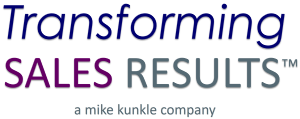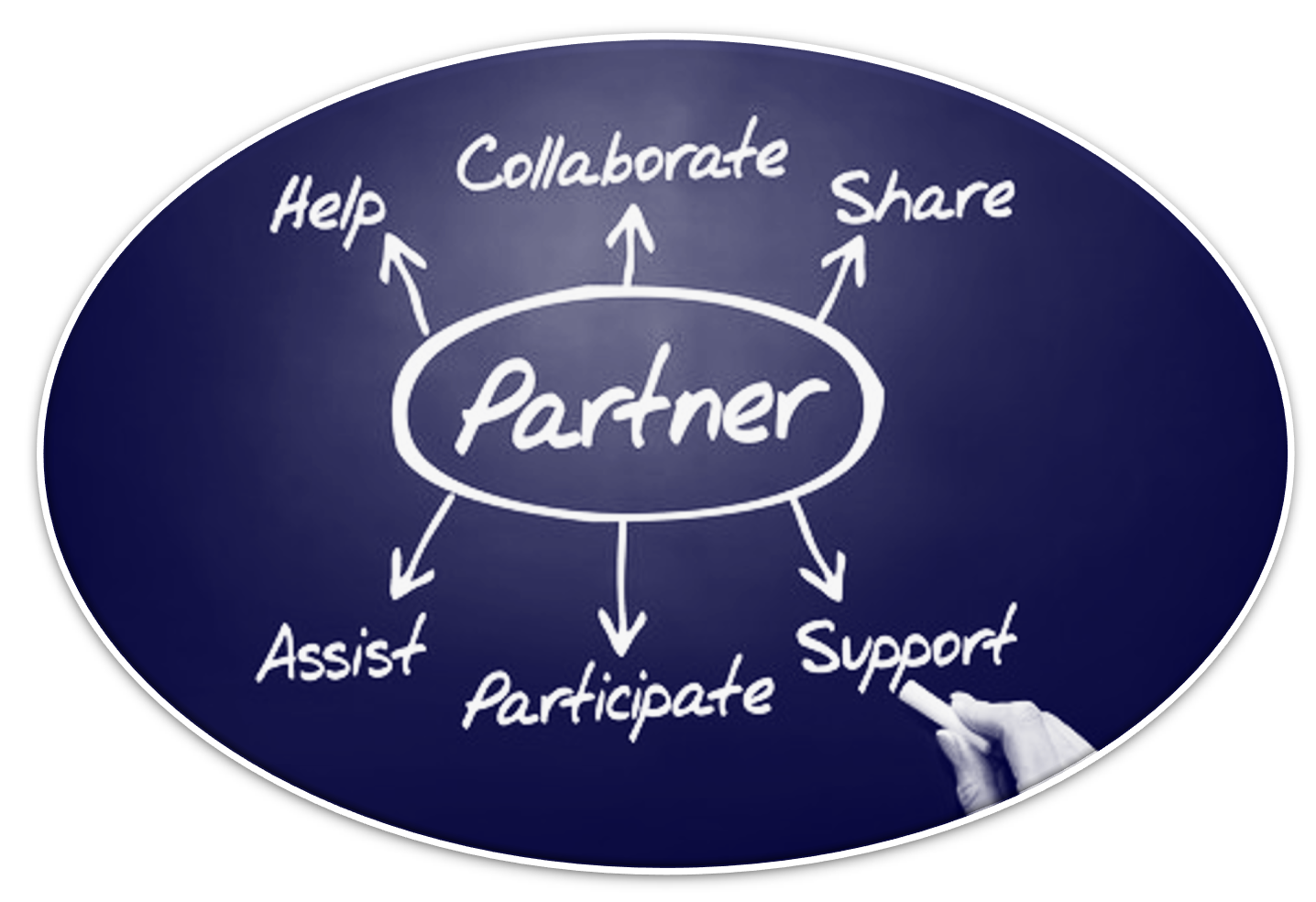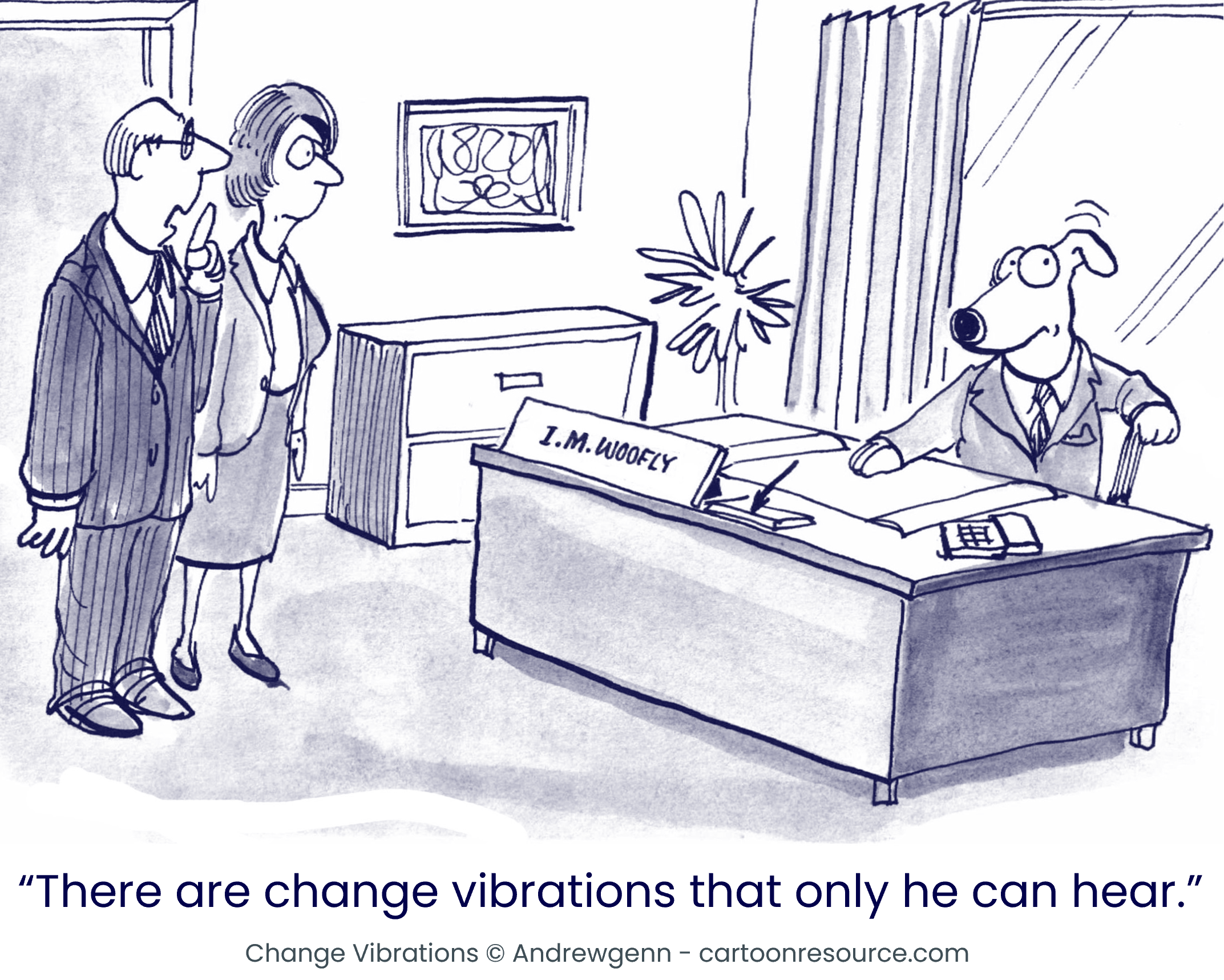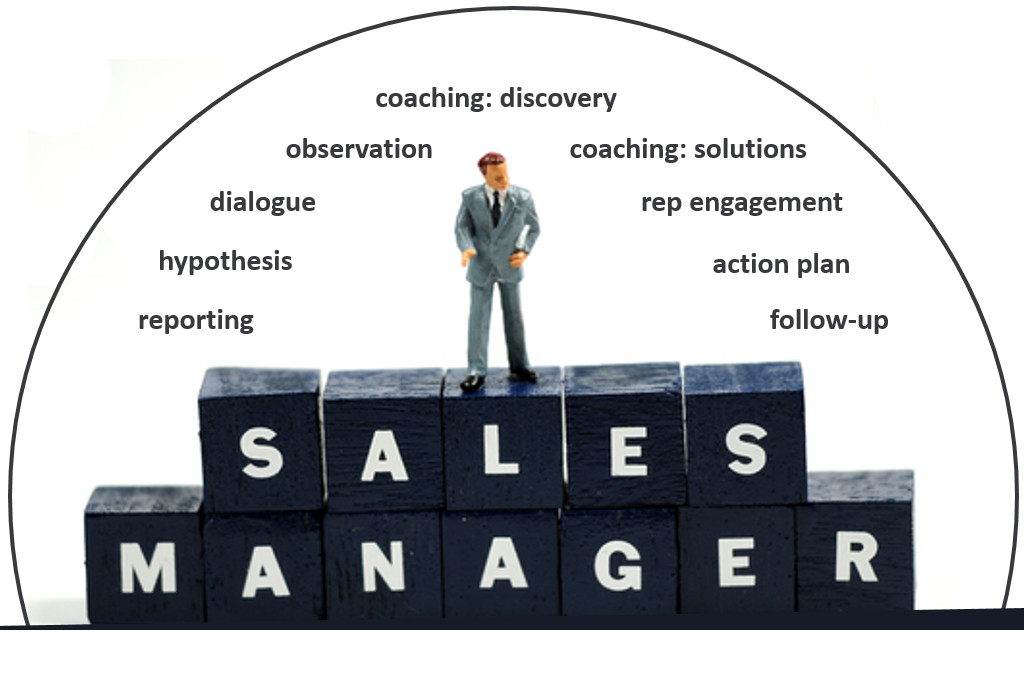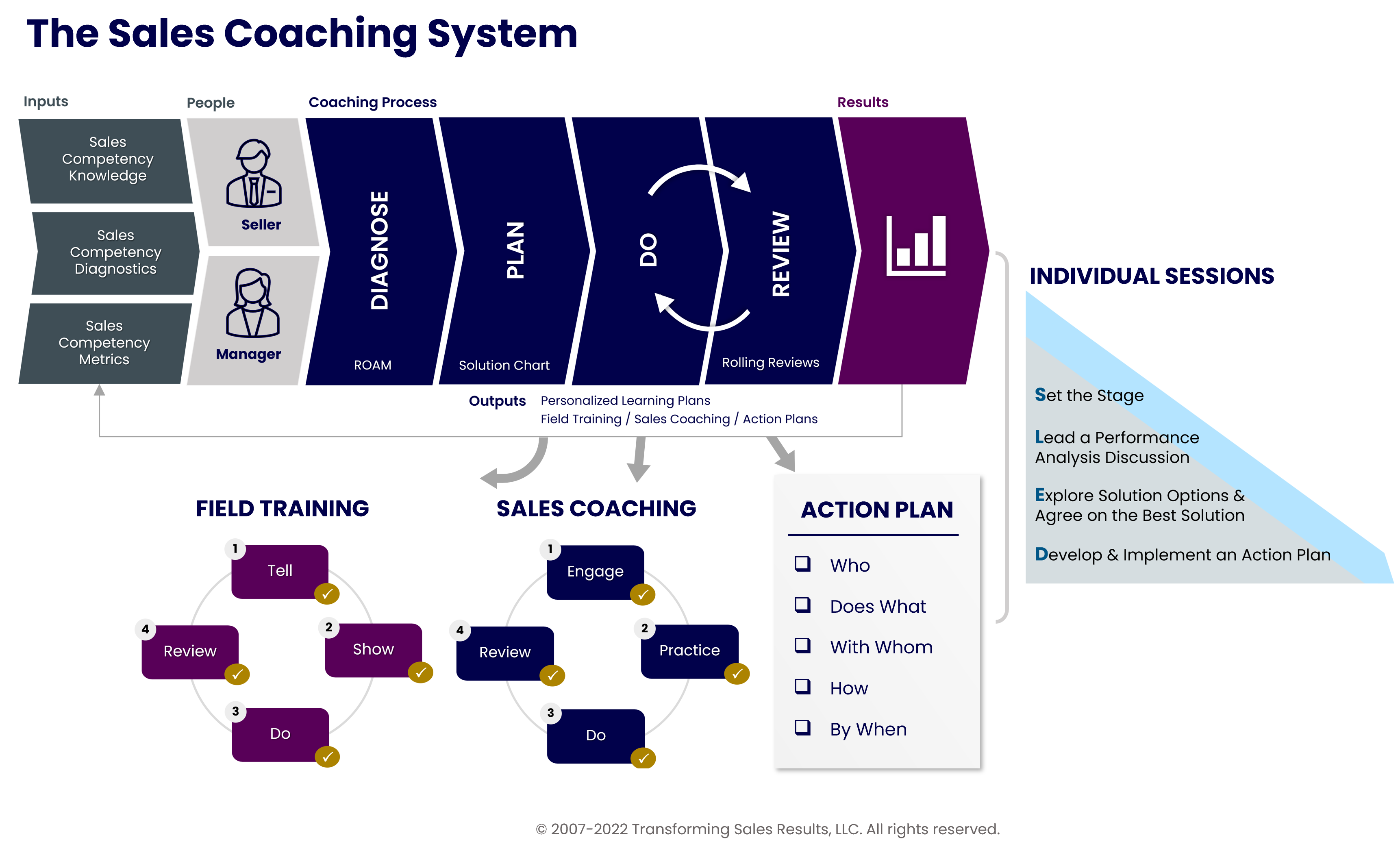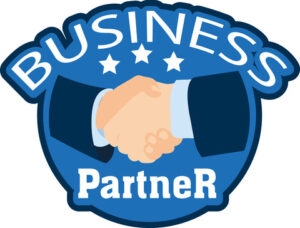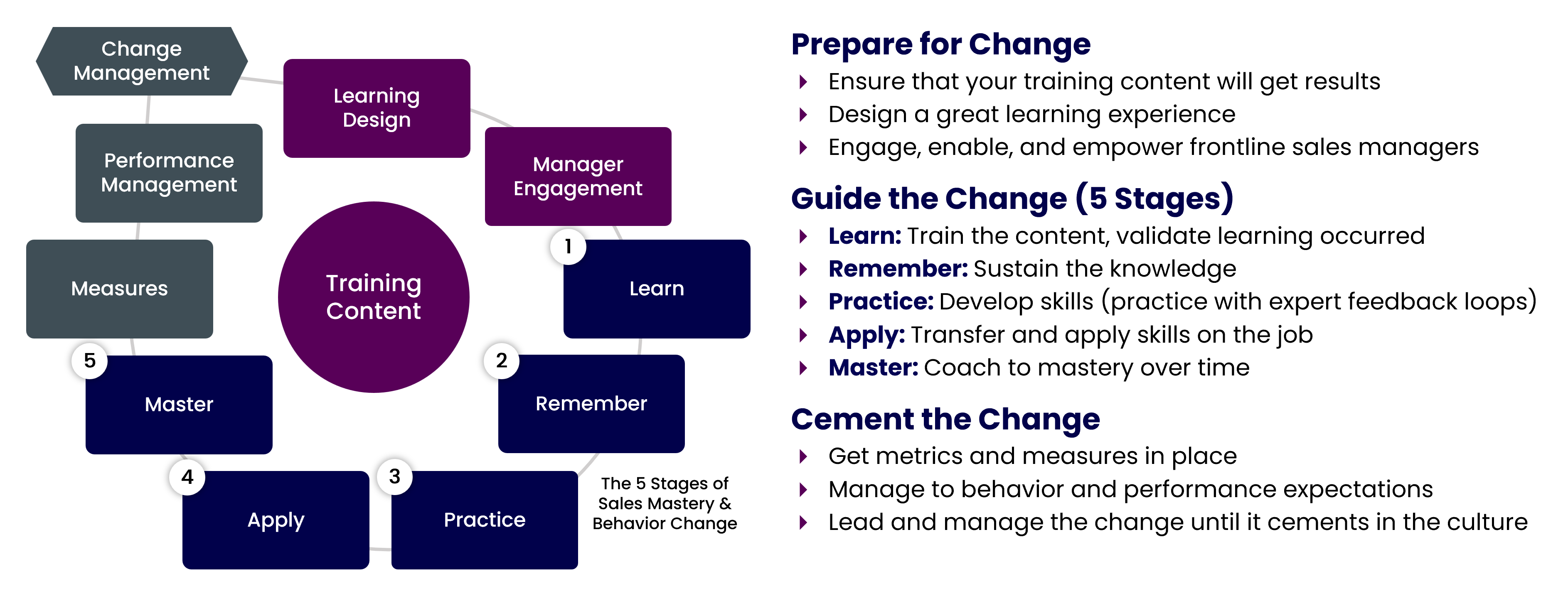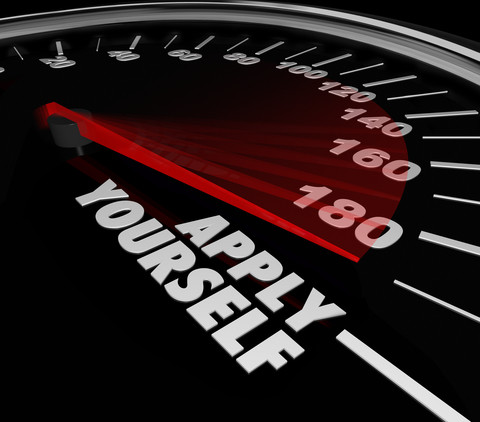How Sales Enablement & Sales Managers Can Partner to Drive Results
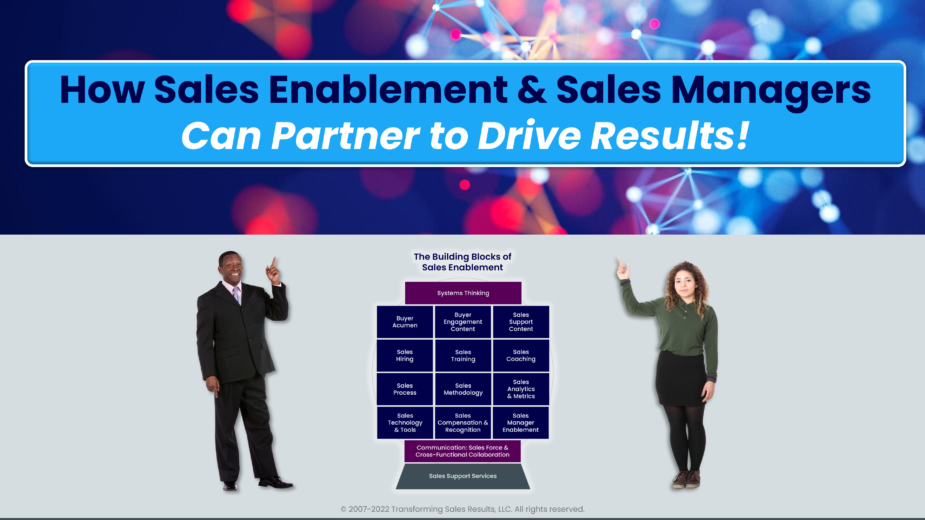
There’s still a lot of talk these days in the sales enablement community and the market at large about the need for sales and marketing alignment. I wish I saw more of it actually happening, but the concept is out there and there are examples of what good looks like. When it happens, the results can be impressive: less internal friction, more effective messaging to both the market and individual buyers, more marketing-qualified leads and more efficient lead gen, improved deal velocity and sales velocity (greased by putting the right content in the right hands at the right time, for both sellers and buyers), and ultimately, improved sales results.
There’s another alignment and partnership opportunity that gets a lot less airplay yet has equal or greater potential to drive sales results: the alignment and partnership between Sales Enablement and Front-line Sales Managers (FLSMs).
If it sounds as if I’m ignoring the need for top-down support for enablement from company executives and especially sales leadership – trust me, I’m not. Sponsorship and support is critical. Leaders have a key responsibility in sharing the change story and inspiring and gaining support from front-line managers and employees. But without buy-in (not just compliance) from FLSMs, getting large-scale organizational results from sales enablement initiatives is a pipe dream.
The role of these managers in driving change seems to be a fairly-well acknowledged point of view. Given that, engaging FLSMs is a critical strategy and worthy of further discussion.
Disclaimer: Before I continue, I want to disclaim that while I try to mention other initiatives throughout, I will talk a lot about training in this post, using it as an example. It should be clear from my book, The Building Blocks of Sales Enablement (see a graphic of the blocks and systems here), that I champion enablement as being far more than just training, but it’s a convenient example for this post. As a friend of mine says, “Don’t hear what I’m not saying.” You can apply the thoughts shared in this post to most of what you do as an enabler, to better partner with your FLSMs.
Sidebar: Recognize That Sales Enablement is Change Management
I want to recognize that I’m talking about sales enablement as if it were some sort of, well… prepare yourself… change management project.
[Insert ominous music here.]
In case there is any doubt, I want to dispel it here, before I move on.
Sales Enablement initiatives ARE Change Management projects. If you don’t acknowledge that, you will never get the best possible results from your enablement investments.
Engaging Front-line Sales Managers
With that said, let’s talk about how Sales Enablement Leaders can get FLSMs engaged in your sales performance change projects. I could write another book about this topic alone, so for this post, will confine myself to four recommendations.
Gain FLSM Buy-In
Gaining FLSM buy-in is the first step. Executive sponsorship and senior sales leader support are certainly important, but if you don’t have true buy-in from front-line managers, top-down support will only gain you a certain level of compliance.
We all know that typically, FLSMs get promoted because they were good sales reps. And, they also still see their reps grappling with reality every day. This makes your FLSMs a great source of content, customization advice, feedback, and training program (or other enablement initiative) reality checks.
Getting your FLSMs involved in content development or customization is a great way to not only ensure your content will make a difference, when used, but to gain your managers’ support. Engage them, listen, take their advice when you can and explain why if you can’t (and have a good reason), and this will go a long way toward getting their buy-in. Doing a top-performer analysis will also add credibility to your efforts with managers.
Develop FLSMs as Coaches
Preparing FLSMs to coach effectively is another critical step. It’s hard to ask them to coach if they haven’t received great coaching to use as a model to follow, or been trained on how to do it effectively. In one client organization, years ago, where I was asked to improve sales coaching effectiveness, managers thought they were coaching when they said, “Mary, you’ve missed your goal for the past two months and if you don’t hit it this month, I’ll be forced to document it and start performance management with you.” (And no, I’m not kidding.) In another, “sales coaching” was where the managers sat down with the reps to tell them what they were doing wrong and what to do instead. Then, it was “Go get ‘em, tiger” and “Do better next month.”
This isn’t a post on sales coaching, specifically, but generally, to coach behaviors effectively after sales training, a sales methodology implementation, a new tool or product roll-out, or other enablement initiative, managers must know how to:
- Use reporting and analytics to identify areas for improvement
- Hypothesize about the possible behavior gaps that are responsible for the performance gaps
- Have a dialogue with their rep and observe them in action to confirm their hypothesis or determine the actual behavior gaps, meaning what they are doing compared to what was taught and known to be the most effective practice (ties back to that top performer analysis I mentioned earlier)
- Conduct an effective coaching session where the rep is engaged in both the discovery process (coming to their own conclusion about what the manager now realizes) and building the solution. (Interestingly, this is not much different than what we expect reps should do with their buyers.)
- Engage the rep in the construction of an action plan to implement a solution that will address the issue and improve their results
- Once results are improved, go back to the beginning and start again – to create a cadence of continuous improvement and a coaching culture
Get this plan in place, support your managers in executing it (engage, enable, empower), and you will establish great relationships with your FLSMs as you help them move the needle on the metrics that matter most and achieve their goals
With content that will work, FLSM buy-in, effective coaching skills, and a system like this as a foundation, I’ll share a formula for a successful partnership between sales enablement and front-line sales managers, which I hope will help you.
The Formula for Success with Sales Enablement & FLSMs
In short, this is the formula:
- Engage , train, enable, and empower FLSMs first (on the above, and on whatever you do with reps)
- Involve managers during the prep and execution for rep training and other enablement initiatives
- Partner for knowledge sustainment
- Partner for skills development (practice) and transfer or application (execution)
- Partner to support managers in coaching their reps to mastery
Enable Managers First
Depending on the size of your sales force and management team, some managers will have been involved in the sales methodology or content development, and some may not have been. If you have a small manager force, involve everyone. If you can’t, select wisely. Often, the involvement of key, respected sales managers will help with the buy-in of others – especially if the involved managers update the others (positively) during the content development cycle.
Even if they were engaged, your FLSMs should still be trained first in the final program or initiative content – as should those who weren’t as closely involved – before their reps are trained.
I often say that if I only had a dollar to spend on sales training, I’d spend 75 cents on the sales managers
That quote is hyperbole, to make a point, but not far from true. If you expect your managers to coach and drive results with what was taught, they need to be the experts on the content in your organization. They will need their own sustainment, transfer plans, and coaching on both the rep program content and how to coach it, and this is where the enablement team can partner with sales leaders to support the FLSMs, for the benefit of all.
And, as mentioned in the previous section, the FLSMs should receive training on sales coaching, and receive the same sort of enablement support as you’ll provide for the training on your enablement initiative.
Show your respect for the FLSMs and support them in doing their jobs more effectively and getting better results from their reps, and you’ll have all the support you need, in return. Work with them and through them, supporting them, not around them. If they’re not engaging as needed, go to them directly first, rather than just reporting it up the chain.
Lastly, we all seem to recognize how important it is for managers to coach reps, but we often miss this for our FLSMs. Ensure that someone is coaching the coaches, as well. It’s best if their leaders are able to do this, but using other internal resources (such as coaching experts on your enablement team) or external coaching experts can work.
Involve FLSMs in Sales Rep Training
Yes, I know what you’re thinking. “But Mike, I just trained them on the rep training. You expect me to ask them to attend the training twice? You’ve lost your mind or don’t get reality!” I may have lost my mind, but yes, that is exactly what I’m recommending, and what I have done, in the real world, multiple times in multiple companies, from SMB to Middle Market companies to Fortune 500 corporations. Is it always an easy sell? No, of course not. Is it possible? Absolutely.
It helps when you have a sharp sales leadership team who “gets” it and believes in what you’re doing. In fairness, I haven’t always succeeded, but it is completely possible. Sometimes, I’ve had to create an abbreviated training for managers, but I don’t lead with this option. It’s a negotiating position, as needed. If you’re a “pick your battles” person, I believe this is one worth picking. In your organization, you’ll have to use your best judgment.
When managers attend the rep training sessions, have them attend to:
- set the stage upfront
- to generally observe their reps in action and engage with them
- set the tone for not stepping out constantly for phone calls
- provide an occasional demonstration to the group (helps with rep buy-in)
- be an extra coach for exercises, activities, and role plays.
Plan for some preparation and alignment between the sales trainer and the FLSMs to ensure the right expectations are set in advance, including roles, participation, and effective classroom behaviors. When you do all of the above, remember that establishing psychological safety at work is critical, and this should be part of your sales and company culture overall.
Knowledge Sustainment (Remember)
There are various ways to support knowledge sustainment, including post-training sales meetings, follow-up testing/assessments, follow-up elearning, as just some options. Spaced repetition (repeated exposure to content/materials) and retrieval learning (asking questions about the content) are two evidence-based instructional approaches that are proven to dramatically increase retention. But today, there are also options on the market that offer technology support for sustaining knowledge gained in training programs.
The options continue to grow, but in alphabetical order, here are a few that come to mind: Allego, Axonify, Count5, Mindmarker, and Qstream. Many sales enablement SaaS apps include something like this now, as well, as part of their broader feature set.
Skills Transfer (Practice and Apply)
Getting people to use what you teach on-the-job has been a Holy Grail pursuit for so long in the training profession, that it amazes me that we’re not better at it, as a whole. I’ve used performance support (job aids) and “Meetings in a Box” or Manager Toolkits for years to help managers run post-training meetings to reinforce the training and help reps prepare to apply what they learned to real-world situations.
It’s a fascinating dichotomy that most of the major sales training firms offer multiple options to support transfer and application, and unfortunately, a common insider complaint in the sales training industry is how difficult it can be to get clients to purchase these critical add-on solutions. (At SPARXiQ, for example, in Modern Sales Foundations, we embed this right into our implementation approach for this reason.) If organizations had their own solutions to ensure adoption and were prepared to execute with discipline, I wouldn’t worry about it as much. Unfortunately, that’s not always the case. Far too often, sales training remains event-based, with only good intentions and high hopes that reps will apply what they learned.
59% of enablers cite the inability to get reps to use what they were taught as the single greatest barrier to training success
– [From ATD’s 2019 State of Sales Training Report] –
The options continue to grow for skill practice, too, and these features are included in most of the top sales enablement software applications. (We use and resell Allego for this purpose.) Keep in mind that as good as these learning/sales enablement tools may be, most are designed to improve one-way messaging or enable asynchronous skill practice with feedback, but are just beginning to expand to support two-way dialogue or synchronous practice and role play (some with other humans, some with AI bots or simulations). Many, however, don’t necessarily support transfer, meaning to use the skills on the job. Performance support, manager follow-up, post-training meetings, follow-up training, field observation or listening to recordings with follow-up coaching, and holding reps accountable are the old standbys that still work.
If you can incorporate any process-oriented parts of the training into CRM or provide other other sales enablement solutions that offer workflow performance support, that’s an added bonus to make the new skills and behaviors “the way we do things around here.” There are a handful of tools that support process and methodology adoption and given Gartner’s views on guided selling, I expect to see this category continue to blossom.
Coaching to Mastery
If reps remember what they were taught and apply it on the job, you are still only halfway home.
[Sorry.]Think about it. When was the last time you learned a new skill or a tried to make a shift in a complex behavior and mastered it while you were learning or when you applied it immediately afterward? If you’re a sports-minded person, think about a tennis or golf lesson, which involved a new grip or swing. Or perhaps trying to become a better public speaker or change eating and exercise habits. These examples usually resonate with people and prove the point. Change doesn’t usually occur overnight, and often, mastery takes even longer. This is normal, and should be expected and planned for.
Changing behaviors and habits is not easy. Initial application does not equal mastery. Mastery is gained over time.
As examples, elite athletes, public speakers, and executives often engage coaches to reach higher levels of performance, just as some people engage a personal trainer to reach their health goals. Why we would expect this to be any different for sales professionals, I will never understand.
After the training, your reps will need coaching, and if you’ve followed the above advice, you’ve prepared your FLSMs to do it. Now they need to execute. Not just to help reps apply new skills and behaviors, but to develop new habits, and refine how they’re doing things over time, until they reach mastery, often to a level of unconscious competence. Although, I will say that my personal experience with top-performer analysis suggests that the very top-tier of performers (top 4%) shift between conscious and unconscious competence more frequently, as they continually try to learn and improve on their own, as well. These elite sellers tend to be more deliberate in their choices. This is not common, however. Most of us mere mortals need coaching and are grateful to achieve unconscious competence.
Coaching to mastery is a longer-term effort, of course, and should be part of every FLSM’s arsenal and every rep’s personal development plan. I can go one step further to suggest that what was learned in training become part of the organization’s entire performance management system. That’s included in the above Sales Training System and Sales Coaching System already, and is a deeper topic for another day. There is an entire separate Sales Management System, as well, which I will write about separately.
Next Steps
As usual, this is what I think, based on my experience. More importantly… What do YOU think? I’d enjoy hearing your thoughts and experiences in the comments.
I hope I’ve given you things to think about in this post. More importantly, I hope you find some things to act on and change to get the most from your engagement with your front-line sales managers, and the best results for your sales force. If you need support or want to talk, I’m easy to find. Reach out here (scroll down to the contact form), on LinkedIn, or through SPARXiQ.
Thanks for reading, be safe out there, and by all means… let’s continue to elevate our sales profession.
Mike
Follow my work and connect
- The Building Blocks of Sales Enablement Book: https://bit.ly/BBofSE
- Sales Enablement Straight Talk Newsletter: https://bit.ly/MikeKunkle-LinkedInNewsletter
- The Building Blocks of Sales Enablement Course: https://GoFFWD.com/Blocks
- SPARXiQ Blog: https://sparxiq.com/author/mikekunkle
- Distribution Strategy Group Blog: https://distributionstrategy.com/author/mike-kunkle/
- Sales Effectiveness Straight Talk Webinars: https://bit.ly/MikeKunkle-OnDemand(60 Free Recorded Webinars)
- LinkedIn Articles: http://bit.ly/MK-LinkedInArticles
- LinkedIn Profile: https://www.linkedin.com/in/mikekunkle
- X (formerly Twitter): https://twitter.com/mike_kunkle
- Instagram: https://www.instagram.com/mike_kunkle/
- TikTok: https://www.tiktok.com/@mike_kunkle
- YouTube: https://www.youtube.com/@MikeKunkle/videos
About Mike
Mike Kunkle is a recognized expert on sales training, sales effectiveness, and sales enablement. He’s spent over 30 years helping companies drive dramatic revenue growth through best-in-class training strategies and proven-effective sales transformation systems – and he’s delivered impressive results for both employers and clients. Mike is the founder of Transforming Sales Results, LLC and works as the Vice President of Sales Effectiveness Services for SPARXiQ, where he designs sales training, delivers workshops, and helps clients improve sales results through a variety of sales effectiveness services. Mike collaborated with Doug Wyatt to develop SPARXiQ’s Modern Sales Foundations™ curriculum and also authored the SPARXiQ’s Sales Coaching Excellence™ course. His book, The Building Blocks of Sales Enablement, is available on Amazon and The Building Blocks of Sales Enablement Learning Experience is available through FFWD.
